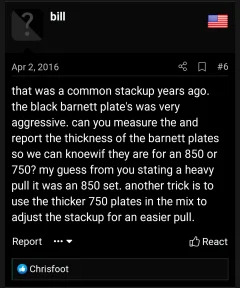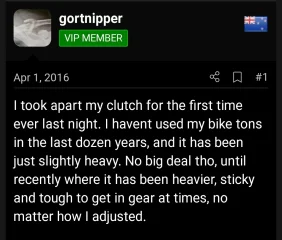- Joined
- Nov 11, 2013
- Messages
- 5,403
I have a set of Barnett plates I have had with my Commando for the last thirty years.

Have always run it the old school way with 3 bronze and 2 Barnetts in the stack. The old Barnetts showed negligible wear when measuring the stack vs the new ones I put in several years ago after my rebuild. No issues, other than the bronze plates completely ate up the clutch centre.

The old plates are this style

New Barnett plates are this style

Does anyone know if there is any difference in the friction material vis a vis the old style plates?
Have always run it the old school way with 3 bronze and 2 Barnetts in the stack. The old Barnetts showed negligible wear when measuring the stack vs the new ones I put in several years ago after my rebuild. No issues, other than the bronze plates completely ate up the clutch centre.
The old plates are this style
New Barnett plates are this style
Does anyone know if there is any difference in the friction material vis a vis the old style plates?



